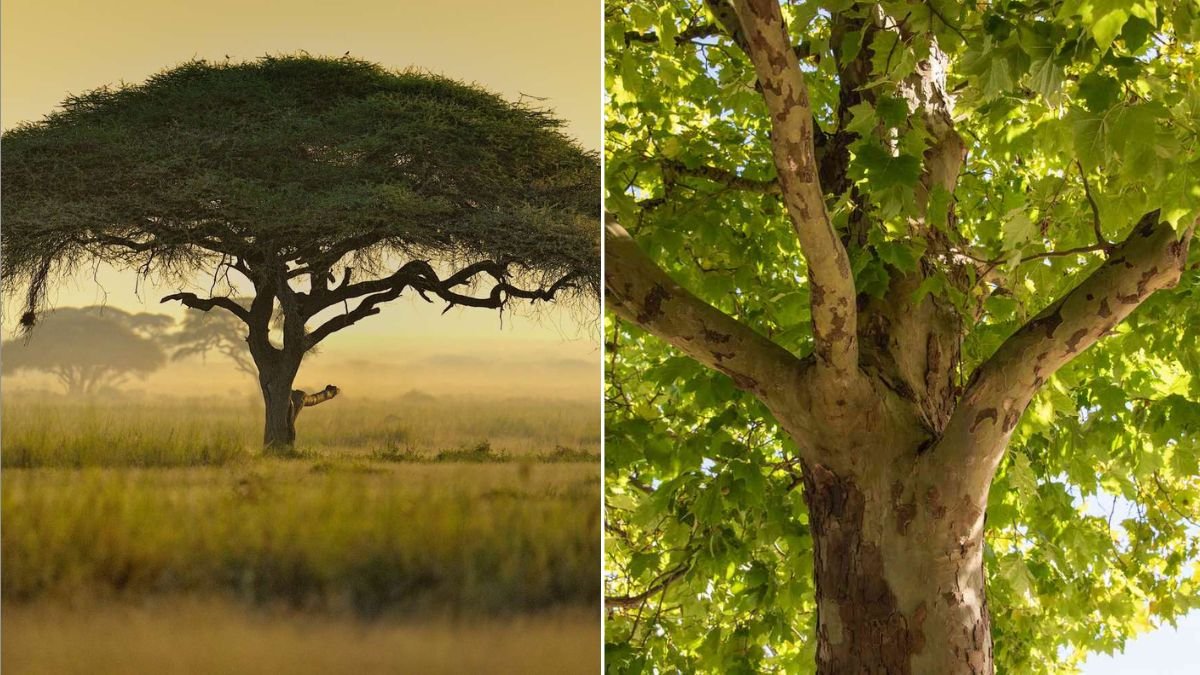In hot climates, shade isn’t just a luxury—it’s a necessity. When summer temperatures soar, a well-placed shade tree can cool your home, protect your yard, and provide a refreshing retreat outdoors. Unlike artificial shading structures, trees grow more beautiful with age, improve air quality, and even raise your property’s value. But not all trees can withstand blazing sun, drought, and long growing seasons.
If you live in a hot region, choosing the right shade tree makes all the difference. Below, we’ll cover the benefits of planting shade trees, key factors to consider, and a list of the best varieties that thrive in heat.
Why Shade Trees Matter in Hot Climates
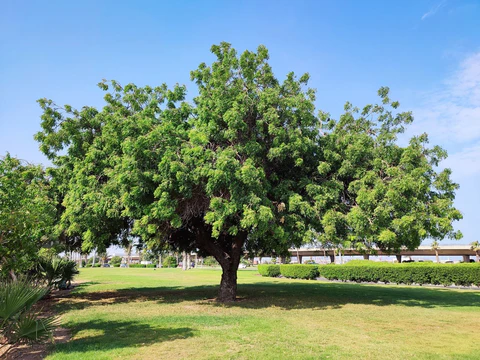
- Lower Energy Bills – A strategically planted tree can reduce air conditioning costs by shading your roof, windows, and walls. Studies show they can lower cooling bills by up to 30%.
- Yard Comfort – They create cooler outdoor spaces for children, pets, and gatherings.
- Soil Protection – Shade reduces evaporation and helps maintain soil moisture for other plants.
- Environmental Benefits – Trees filter air, sequester carbon, and provide habitat for birds and pollinators.
- Curb Appeal – A mature shade tree adds character, beauty, and value to your property.
What to Look for in a Shade Tree for Hot Climates
- Heat Tolerance: Select species that thrive in prolonged sun exposure and high temperatures.
- Drought Resistance: Trees that can survive with minimal water once established are ideal.
- Canopy Size: Wide-spreading branches provide maximum shade coverage.
- Growth Rate: Fast-growing trees offer quick relief but may require more maintenance; slower growers often live longer.
- Root System: Look for trees with non-invasive roots to avoid damage to sidewalks, driveways, or foundations.
The Best Shade Trees for Hot Climates
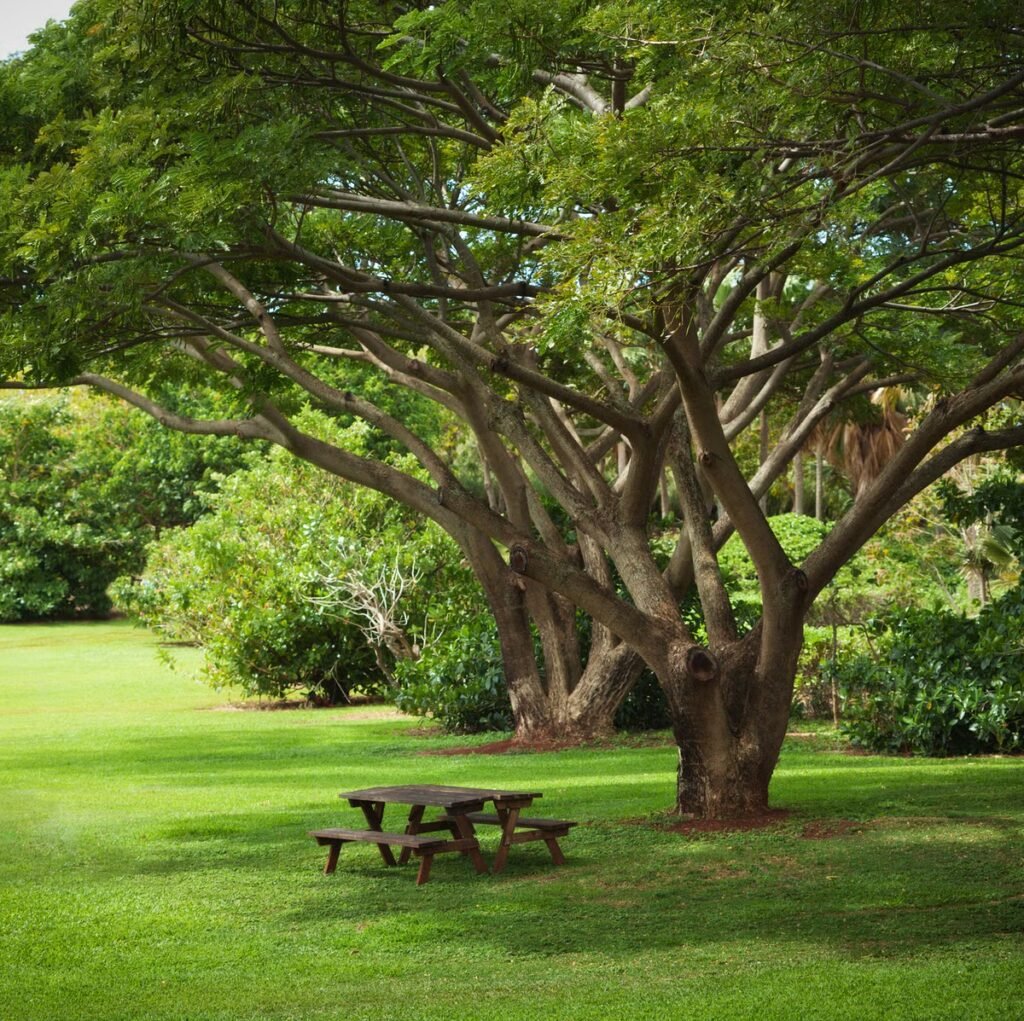
1. Live Oak (Quercus virginiana)
- Why it’s great: A classic of the southern United States, the live oak is tough, evergreen, and grows into a massive, spreading canopy that offers consistent shade year-round.
- Care needs: Once established, it’s highly drought-tolerant. Prune in early years to develop strong structure.
- Best for: Large yards and landscapes where you want a long-term shade solution.
2. Southern Magnolia (Magnolia grandiflora)
- Why it’s great: Known for its glossy green leaves and fragrant white flowers, this tree provides both beauty and cooling shade.
- Care needs: Performs well in hot, humid climates. Needs moderate watering until roots establish.
- Best for: Homeowners who want a tree that offers ornamental appeal in addition to shade.
3. Red Maple (Acer rubrum)
- Why it’s great: With its fast growth and broad canopy, the red maple provides excellent summer shade and dramatic fall color.
- Care needs: Requires consistent moisture in the early years but adapts well to various soils.
- Best for: Regions with hot summers but some seasonal variation.
4. Desert Willow (Chilopsis linearis)
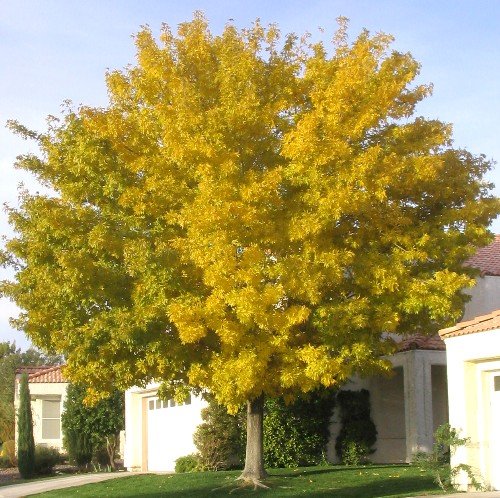
- Why it’s great: Perfect for arid regions, the desert willow thrives in extreme heat and produces trumpet-shaped pink or purple flowers that attract hummingbirds.
- Care needs: Extremely drought-tolerant once established. Needs minimal maintenance.
- Best for: Southwestern U.S. landscapes and dry climates.
5. Chinese Pistache (Pistacia chinensis)
- Why it’s great: A medium-sized, hardy tree that thrives in heat while providing dense summer shade and fiery autumn foliage.
- Care needs: Very adaptable to poor soils and drought conditions.
- Best for: Urban yards where low-maintenance shade is needed.
6. Jacaranda (Jacaranda mimosifolia)
- Why it’s great: Known for its spectacular purple blooms and airy canopy, jacarandas bring both shade and tropical flair.
- Care needs: Prefers well-drained soil and full sun. Not frost-tolerant.
- Best for: Warm, frost-free regions with homeowners who love ornamental color.
7. Texas Red Oak (Quercus buckleyi)
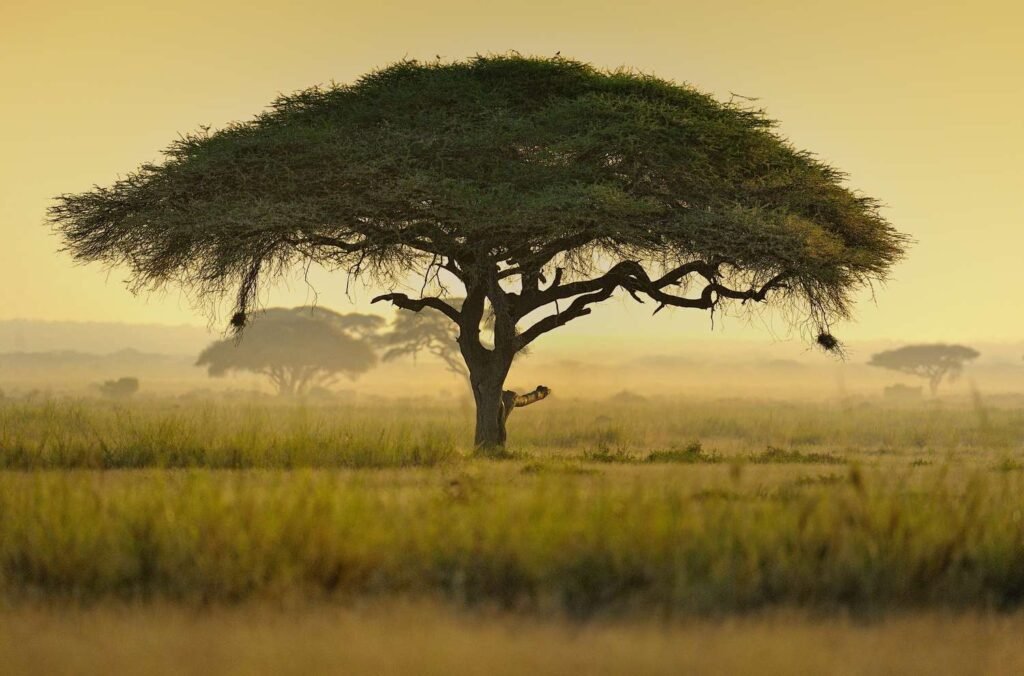
- Why it’s great: A smaller oak variety ideal for hot, dry climates. Provides good shade and brilliant red foliage in fall.
- Care needs: Very drought-resistant once mature.
- Best for: Smaller yards where space is limited but heat is intense.
8. Tipu Tree (Tipuana tipu)
- Why it’s great: A fast-growing tree from South America, the tipu tree creates a wide umbrella canopy and produces bright yellow flowers.
- Care needs: Extremely heat- and drought-tolerant. Watch for aggressive roots near pavements.
- Best for: Large open spaces needing quick shade.
9. Olive Tree (Olea europaea)
- Why it’s great: Both ornamental and functional, olive trees thrive in hot, dry Mediterranean-like climates and provide moderate shade.
- Care needs: Requires very little water once established. Long-lived and low-maintenance.
- Best for: Dry, sunny climates and those who want a productive tree.
10. Crape Myrtle (Lagerstroemia indica)
- Why it’s great: While smaller than other shade trees, crape myrtles provide filtered shade and produce long-lasting summer blooms in vibrant colors.
- Care needs: Heat-loving and drought-resistant.
- Best for: Smaller yards or garden focal points where beauty and shade are desired.
Tips for Planting Shade Trees in Hot Climates
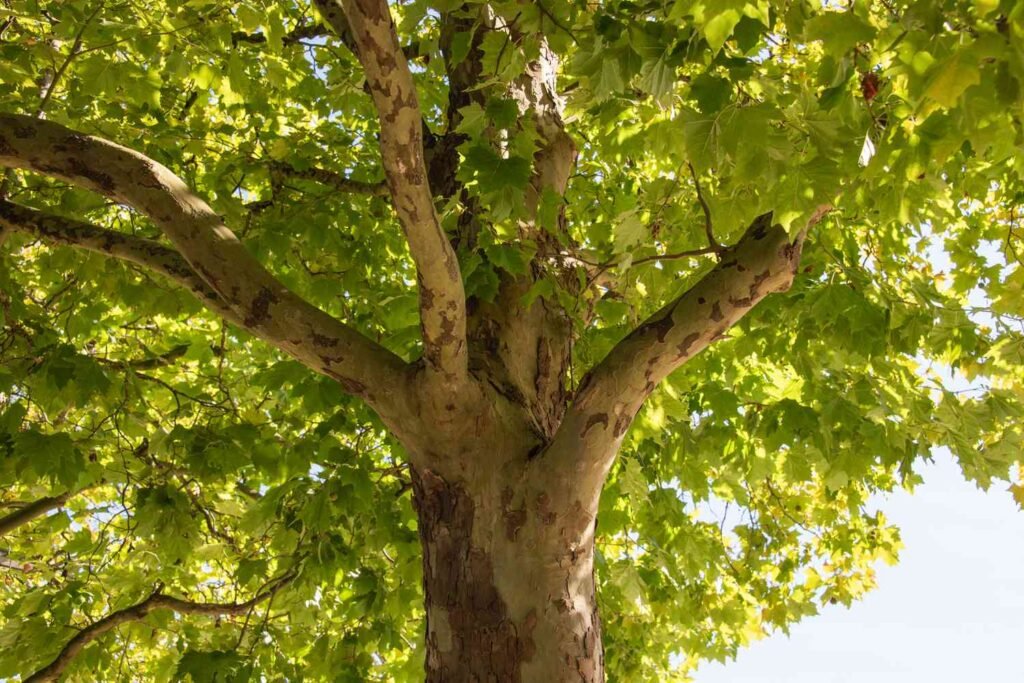
- Plant in Fall or Early Spring: This gives roots time to establish before the intense summer heat.
- Mulch Heavily: A 2–4 inch mulch layer conserves soil moisture and keeps roots cooler.
- Water Deeply, Not Frequently: Deep watering encourages strong, drought-resistant roots.
- Space Correctly: Allow enough room for the tree’s mature canopy and root spread.
- Protect Young Trees: Use tree guards or temporary shade cloth in the first year to prevent sunburn.
Final Thoughts
The right shade tree can transform your hot-climate landscape into a cooler, more inviting space. Whether you prefer the grandeur of a live oak, the flower show of a jacaranda, or the resilience of a desert willow, there’s a tree suited to your environment.
Planting one (or more) now is an investment that pays off for decades—providing natural cooling, beauty, and comfort in the hottest of summers.
